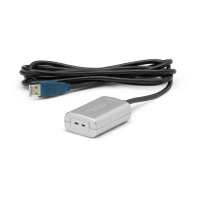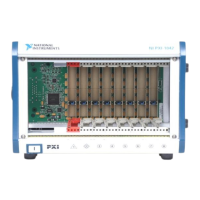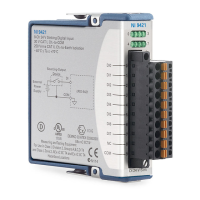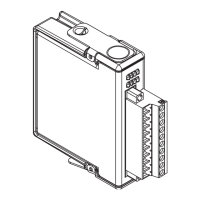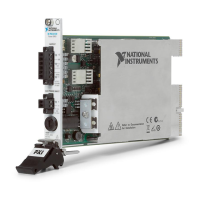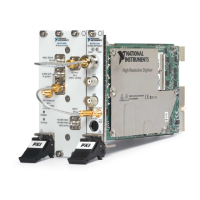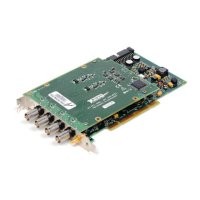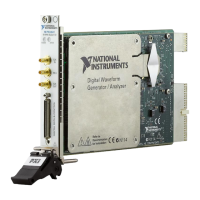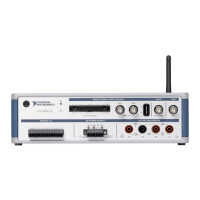Chapter 4 Analog Input
NI USB-621x User Manual 4-8 ni.com
• Avoid Scanning Faster Than Necessary—Designing your system to
scan at slower speeds gives the NI-PGIA more time to settle to a more
accurate level. Consider the following examples:
– Example 1—Averaging many AI samples can increase the
accuracy of the reading by decreasing noise effects. In general,
the more points you average, the more accurate the final result.
However, you may choose to decrease the number of points you
average and slow down the scanning rate.
Suppose you want to sample 10 channels over a period of 20 ms
and average the results. You could acquire 250 points from each
channel at a scan rate of 125 kS/s. Another method would be to
acquire 500 points from each channel at a scan rate of 250 kS/s.
Both methods take the same amount of time. Doubling the number
of samples averaged (from 250 to 500) decreases the effect of
noise by a factor of 1.4 (the square root of 2). However, doubling
the number of samples (in this example) decreases the time the
NI-PGIA has to settle from 8 μs to 4 μs. In some cases, the slower
scan rate system returns more accurate results.
– Example 2—If the time relationship between channels is not
critical, you can sample from the same channel multiple times and
scan less frequently. For example, suppose an application requires
averaging 100 points from channel 0 and averaging 100 points
from channel 1. You could alternate reading between
channels—that is, read one point from channel 0, then one point
from channel 1, and so on. You also could
read all 100 points from
channel
0 then read 100 points from channel 1. The second
method switches between channels much often and is affected less
by settling time.
Analog Input Data Acquisition Methods
When performing analog input measurements, you either can perform
software-timed or hardware-timed acquisitions:
• Software-Timed Acquisitions—With a software-timed acquisition,
software controls the rate of the acquisition. Software sends a separate
command to the hardware to initiate each ADC conversion. In
NI-DAQmx, software-timed acquisitions are referred to as having
on-demand timing. Software-timed acquisitions are also referred to as
immediate or static acquisitions and are typically used for reading a
single sample of data.
